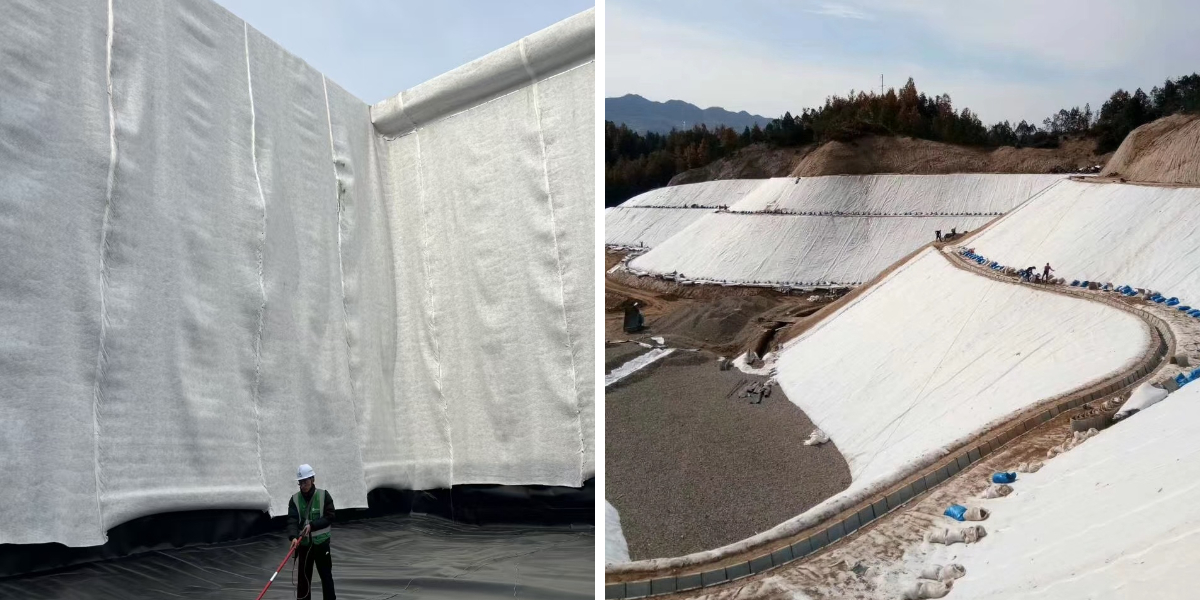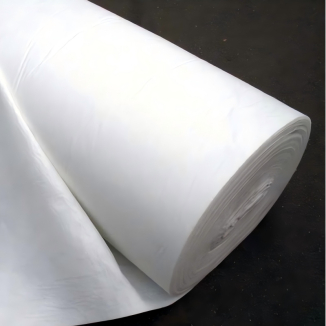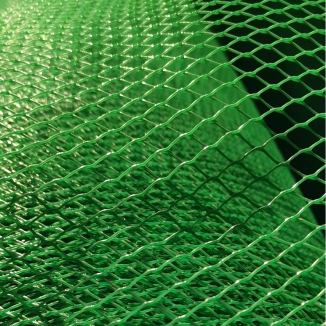Erosion Control with Geofabric: Protecting Slopes and Shorelines
Introduction to Geofabric for Erosion Control
Erosion poses a giant hazard to landscapes, infrastructure, and ecosystems all through the globe. Whether from wind, water, or human activity, the gradual carrying away of soil can lead to catastrophic environmental and economic consequences. In the war in the direction of this natural process, erosion manipulate matting has emerged as a indispensable system for engineers, environmentalists, and land managers. Geofabric, a permeable material material, is engineered to stabilize the soil and beautify the ground, imparting a high quality reply for defending inclined slopes and shorelines. This article delves into the science and software program of geofabrics, exploring how supplies like slope stabilization fabric and silt fence fabric are imperative elements in modern erosion and sediment manipulate strategies.
The Science Behind Geofabric: How It Works
Geofabric points by a mixture of filtration, separation, reinforcement, and drainage. When installed, the material interacts with the soil and water to create a consistent matrix. Its permeable structure allows water to bypass through at the same time as effectively trapping soil particles. This prevents the loss of valuable topsoil and the subsequent formation of gullies or washouts. For instance, when used as erosion manipulate matting on a slope, the cloth absorbs the affect of rainfall, reducing flooring runoff pace and encouraging water to infiltrate the flooring however than raise soil away. Similarly, silt fence fabric acts as a barrier, filtering sediment from stormwater runoff on constructing sites, stopping it from polluting shut by using waterways. The tensile strength of slope stabilization fabric provides mechanical information to the soil, developing its load-bearing capability and stopping slumping or sliding.
Key Applications: Slopes and Shorelines
The versatility of geofabric makes it suitable for a vast range of applications, with slopes and shores being two of the most fundamental areas.
Stabilizing Vulnerable Slopes
Slopes are inherently inclined to erosion due to gravity and the everyday pull of water runoff. Unprotected slopes can swiftly degrade, fundamental to landslides and loss of land. The set up of slope stabilization fabric is a rather excellent strategy to battle this. The material is anchored to the slope's surface, often under a layer of vegetation or rock. It straight away affords a protective shield, conserving the soil in place. Over time, as vegetation grows through the erosion manipulate matting, the root buildings intertwine with the fabric, creating a durable, natural-reinforced composite structure that is rather resilient to erosion forces.
Protecting Sensitive Shorelines
Shorelines are dynamic environments constantly battered with the resource of waves, currents, and tidal action. This relentless electricity can suddenly erode banks, destroying property and habitat. Geofabric solutions, consisting of in the main designed erosion manipulate matting, are used in revetments, breakwaters, and seaside nourishment projects. The fabric is placed under layers of rock or riprap to end the underlying soil from being washed out by way of the gaps between the stones. This separation function ensures the structural integrity of the armor layer for decades. In a great deal much less intense environments, biodegradable silt fence fabric can be used alongside the water's factor to mitigate wave wash at the same time as newly planted vegetation turns into established.
Types of Geofabrics for Different Needs
Not all geofabrics are created equal. They are manufactured from a variety of polymers (like polypropylene or polyester) and come in woven, non-woven, or knitted forms, each and every with exquisite properties suitable to special tasks.
Woven Geofabrics: Known for their immoderate tensile strength, these are best for slope stabilization fabric features requiring vast soil reinforcement, such as steep embankments or conserving walls.
Non-Woven Geofabrics: Excellent for filtration and separation, non-woven material are commonly used in drainage buildings and as a soft, permeable layer beneath rock armor on shorelines. They can moreover function as a lightweight erosion manipulate matting.
Silt Fences: A unique utility of woven monofilament fabric, silt fence fabric is a transient sediment manipulate barrier designed to pond water and filter out soil particles. It is a staple on constructing web sites to comply with environmental regulations.
Installation Best Practices
The effectiveness of any geofabric device hinges on appropriate installation. The device typically consists of internet site preparation, cloth placement, securing, and, if necessary, covering.
1. Site Preparation: The vicinity ought to be graded to the appreciated structure and cleared of sharp debris, rocks, or vegetation that may also desire to puncture the fabric.
2. Material Placement: Rolls of erosion manipulate matting or slope stabilization fabric are rolled out effortlessly at some point of the equipped surface, making positive overlaps between adjoining panels are adequate (as per producer guidelines).
3. Securing: The fabric have to be securely anchored. This is frequently carried out with metal or biodegradable stakes, staples, or anchor trenches. For silt fence fabric installation, a help trench is dug, and the material is related to sturdy posts pushed into the ground.
4. Covering: In many cases, the fabric is then blanketed with soil, rock, or vegetation. For example, slope stabilization fabric is generally seeded and hydromulched straight away after set up to promote vegetative growth.
Long-Term Benefits and Environmental Impact
The use of geofabric for erosion manipulate presents profound long-term benefits. By stopping soil loss, it protects infrastructure like roads and foundations from damage, reduces sedimentation in rivers and lakes, and preserves treasured agricultural and natural land. From an environmental perspective, cutting-edge geofabrics are a sustainable choice. Many are designed to be lengthy lasting and long-lasting, lowering the favor for repeated interventions and repairs. Furthermore, the use of biodegradable erosion control matting made from materials like coir or jute presents transient protection while vegetation is established, after which they naturally decompose, leaving no synthetic residue behind. Even eternal silt fence fabric and distinctive synthetic textiles help to limit the environmental have an impact on of improvement and enchancment with the resource of effectively containing sediment.
Conclusion: A Foundation for Stability
In conclusion, geofabric is an quintessential engineering material in the ongoing effort to manipulate erosion and protect our landscapes. From the sturdy reinforcement introduced with the aid of skill of slope stabilization fabric to the critical filtration furnished thru silt fence fabric, these textiles furnish a flexible, effective, and in many instances eco-friendly solution. Whether safeguarding a crumbling hillside or a receding shoreline, erosion manipulate matting lays the groundwork for stability, enabling natural vegetation to take root and making certain that the flooring underneath our feet stays impervious for generations to come. Investing in the applicable geofabric reply is no longer surely a constructing fantastic practice; it is a dedication to environmental stewardship and sustainable development.
Contact Us
Company Name: Shandong Chuangwei New Materials Co., LTD
Contact Person :Jaden Sylvan
Contact Number :+86 19305485668
WhatsApp:+86 19305485668
Enterprise Email: cggeosynthetics@gmail.com
Enterprise Address: Entrepreneurship Park, Dayue District, Tai 'an City,
Shandong Province








